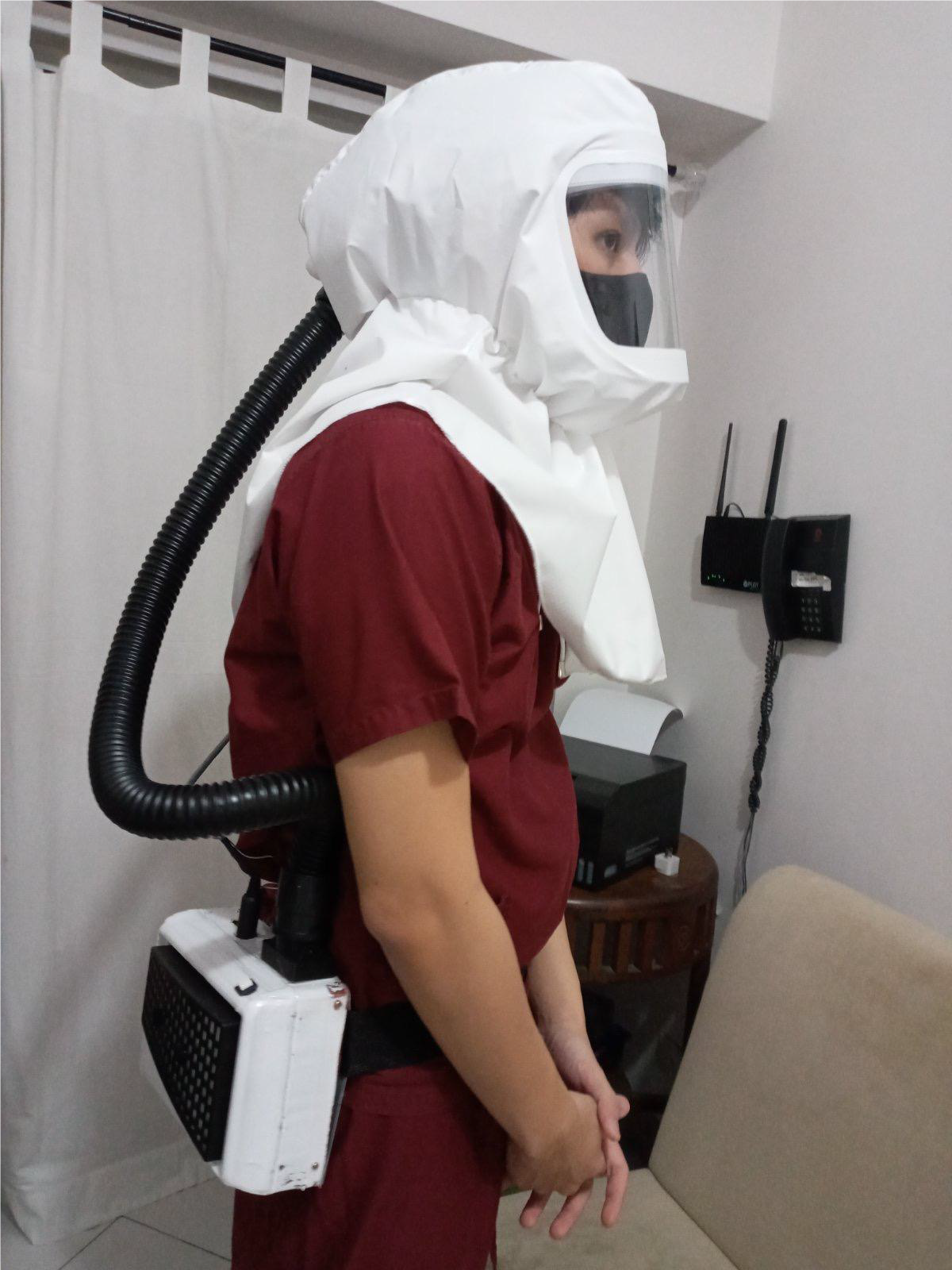HeaRTNovation
Powered Air-Purifying Respirator (PAPR): An Innovative Personal Protective Equipment

Technology Generator
University of the Philippines Manila
Project leader: Samuel Arsenio M. Grozman, MD
The Problem
Coronavirus disease or COVID-19 is a highly contagious viral respiratory disease that spreads through direct contact or via respiratory droplets from infected individuals. Its high rate of transmission brought about a global pandemic where our healthcare workers are at great risk. The use of personal protective equipment or PPE is an important measure in minimizing the exposure of healthcare workers to said infection. Respirators form part of the PPE worn by healthcare workers in attending to COVID-19 patients.
However, due to the pandemic, the supply of commercially-available respirators remains insufficient. It is therefore deemed necessary to develop and fabricate air-purifying respirators using locally-sourced materials to meet the demands.
The Solution
To address this problem, Dr. Samuel Arsenio M. Grozman and his team of researchers from the University of the Philippines Manila-College of Medicine, in collaboration with Engr. Magdaleno R. Vasquez Jr. and his team from the College of Engineering of the University of the Philippines Diliman, through the funding assistance from the Philippine Council for Health Research and Development (PCHRD), have put forth an innovative powered, air-purifying respirator (PAPR). This is a reusable and rechargeable device that is capable of filtering at least 95% of airborne particles while providing at least 170 liters per minute of airflow at its lowest setting.
PAPR is available in two types or models: (1) belt model and (2) helmet model. The Belt Model is composed of a hood unit and a fan unit connected by a hose to direct the air to the head. The Helmet Model eliminates the need for a hose as the fan is integrated into the hood unit, with the power being supplied via a separate belt. Each PAPR is also built with a: (1) breath responsive mode, which adjusts airflow upon varying physiological air demand from the user based on the respiratory rate of the body; (2) an audible buzzer alarm, that notifies users regarding the battery status of the device; (3) a red LED light on the I/O panel of the device that lights up upon detection of blockage in the filter of the hose; and (4) a tune that plays up once the device is turned on and the device control software is successfully loaded.
The device was designed with the safety and comfort of the users in mind, hence the special features integrated in the developed models which cannot be found in other similar devices available in the market.
Despite the absence of an appropriate certifying body for PAPR in the Philippines, the device has passed the testing protocols in accordance to the standards set by The National Institution for Occupational Safety and Health of USA.
Product Development Stage
PAPR is currently at Technology Readiness Level (TRL) 4. To date, the team has already developed seventeen (17) belt models and three (3) helmet models of the device and the prototypes are being tested in laboratory settings. UP Manila is set to file a patent application for the technology and is also open for negotiation with manufacturers who are interested in mass producing the technology.
Contact Person
Dr. Lourdes Marie S. Tejero
Director, UP Manila-Technology Transfer and Business Development Office
ttbdo@up.edu.ph




